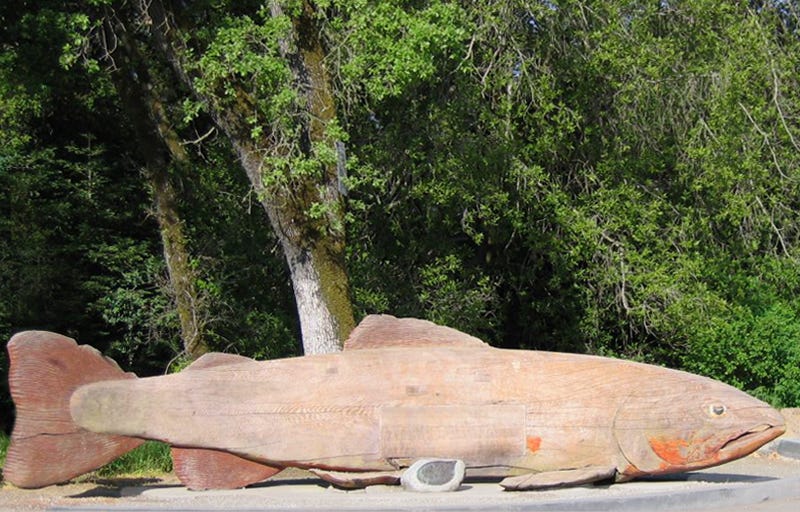Pipers Creek
On a bright day in November or early December I take bus 5 north to Carkeek Park, walk west down to Pipers Creek, and watch salmon returning to their natal waters for breeding.
One salmon from the West Coast has achieved an unprecedented fame along with a given name: Indomitable. Documentaries were made, sculptures carved, a book came out about it. It moved popular imagination like an angel messenger of sorts.
Indomitable was born in 1962 in the Prairie Creek Fish Hatchery in California, 300 miles north of San Francisco, and the rest is wikistory:
In the morning of December 2, 1964, the Prairie Creek Fish Hatchery superintendent Ken Johnson came to work and found a 2-year-old marked coho salmon swimming in a tank of newborn fish, exactly where he had been raised two years earlier.
How the heck did it get up there and into a stand-alone tank, was the topic that in the upcoming hours, days, and weeks spread like a bushfire throughout the company, the local community, the West Coast media, the Middle America media, all the way to The New York Times, which had it in print on the third day:
EUREKA, Calif., Dec. 5 (UPI) –A 2-year‐old, 14-inch silver salmon has traveled some five miles from the Pacific Ocean through creeks and obstacles back to the tank in which he was spawned at Humboldt County’s Prairie Creek hatchery.
“It is the most amazing spawning journey known to world fish history,” said Kenneth Johnson, manager of the hatchery.
The salmon, named Indomitable by workers at the hatchery, swam from the ocean into Redwood Creek, then into Prairie Creek, up a drainage creek, through several other drains, straight up a four‐inch pipe, knocked a wire screen cover off a 2½-inch standpipe, cleared a nearly impassable wire net and entered his spawning tank.
“We really don’t know how he managed to find his way back so perfectly,” Mr. Johnson said, “but it is a generally accepted theory that he would do it through a sense of smell, perhaps of some chemical or fish food we employ.”
Mr. Johnson said the fish was identifiable by a marking used by his hatchery.
“His adipose fin had been removed,” Mr. Johnson explained, “and that is the mark of our hatchery, which is used by no other hatchery in the world.”
Wiki caps the hero’s journey:
Looking for how he got into the tank, workers found 72 more marked coho jack salmon of the same age class stuck in the flume or drainage pipe on the way to the hatching pond.
This is it folks. The old shop is no more.




